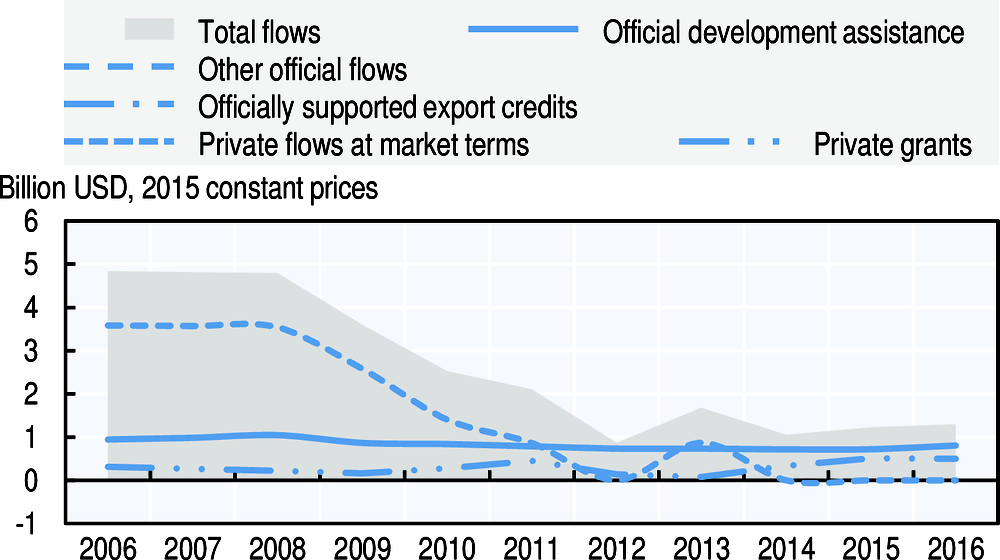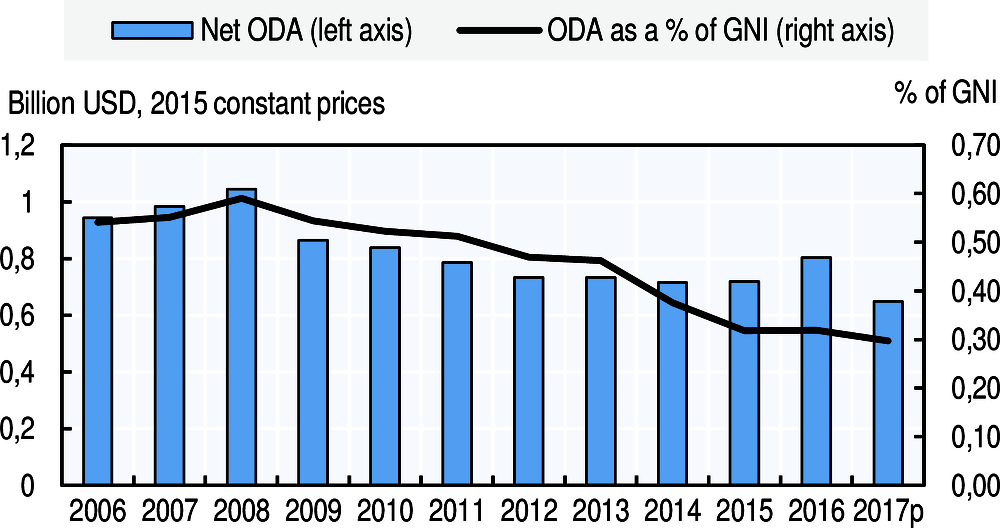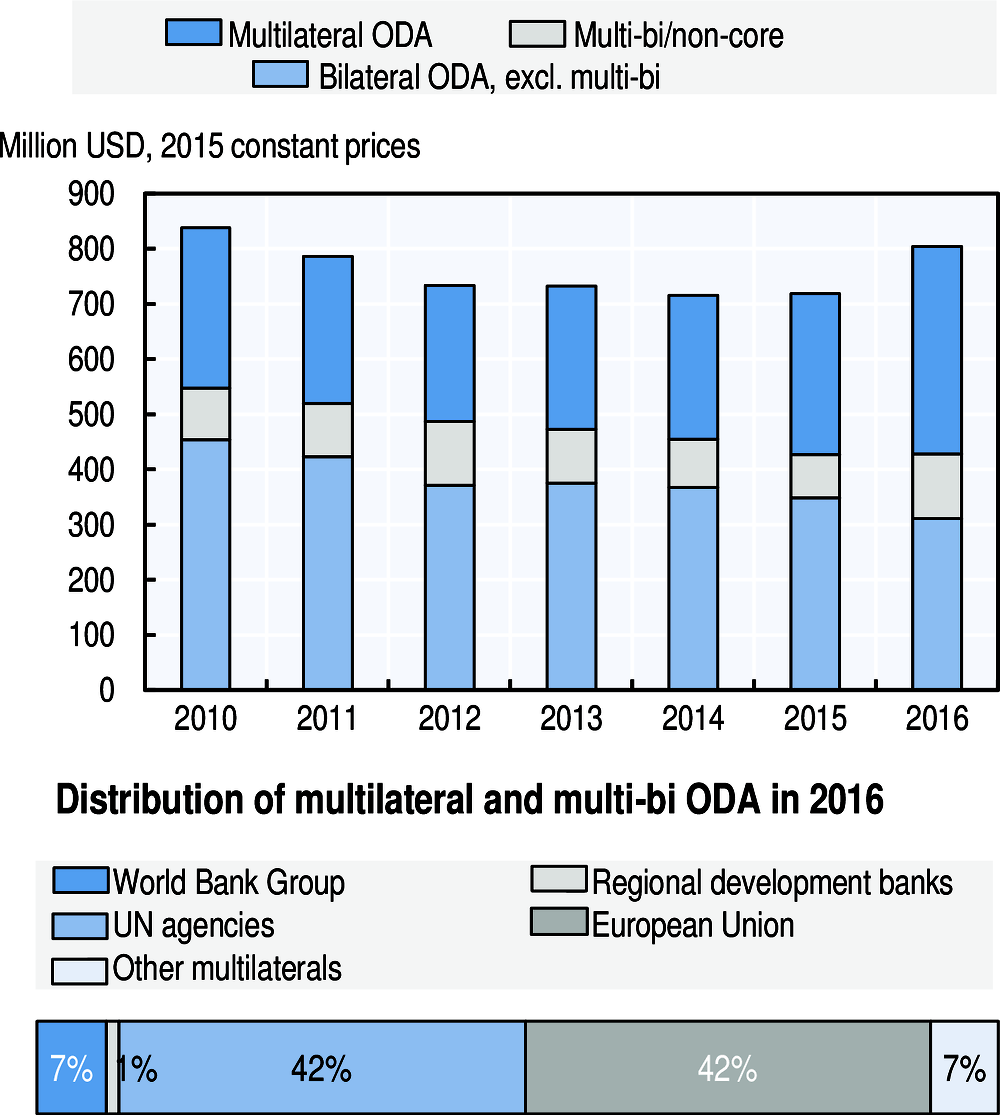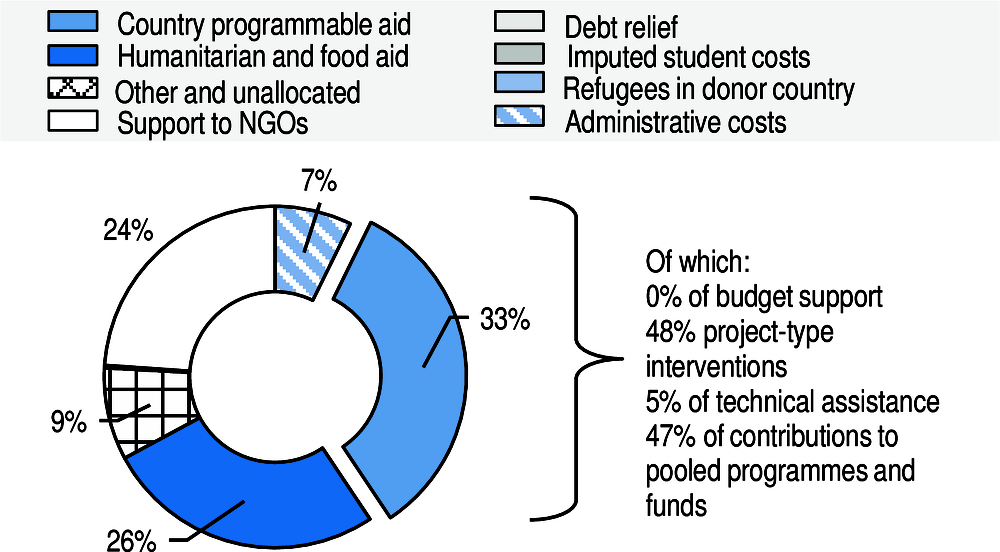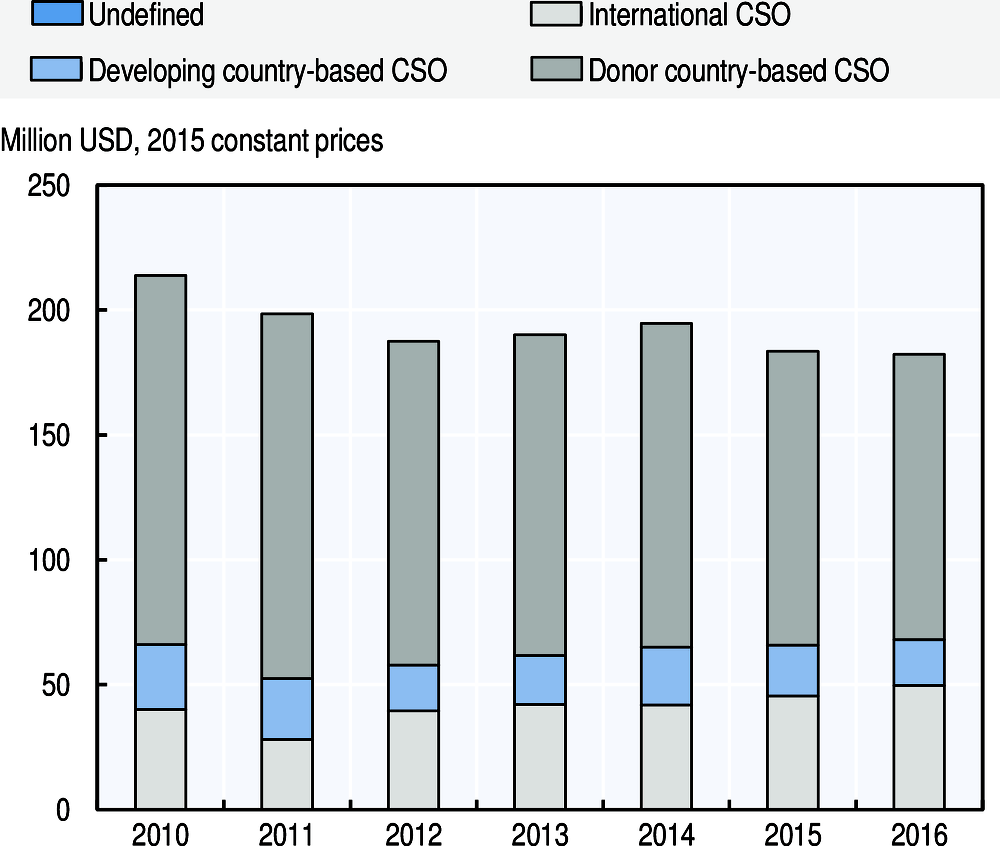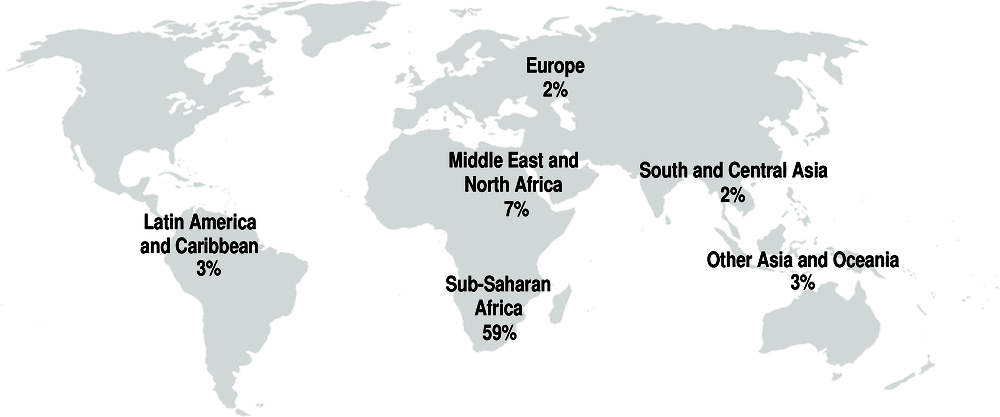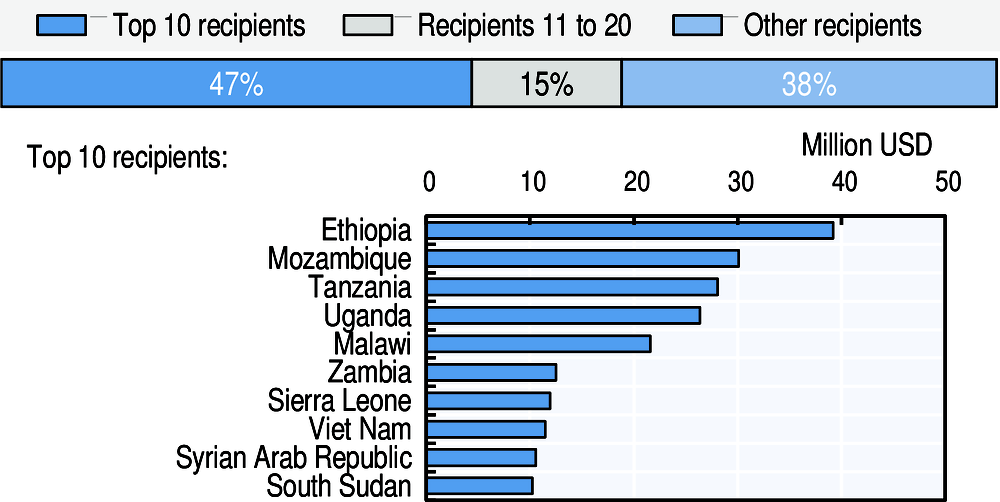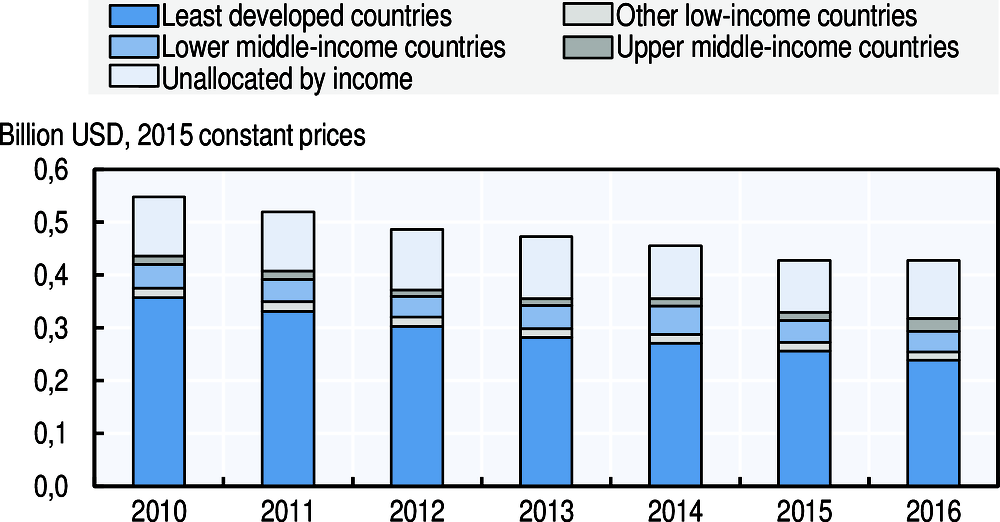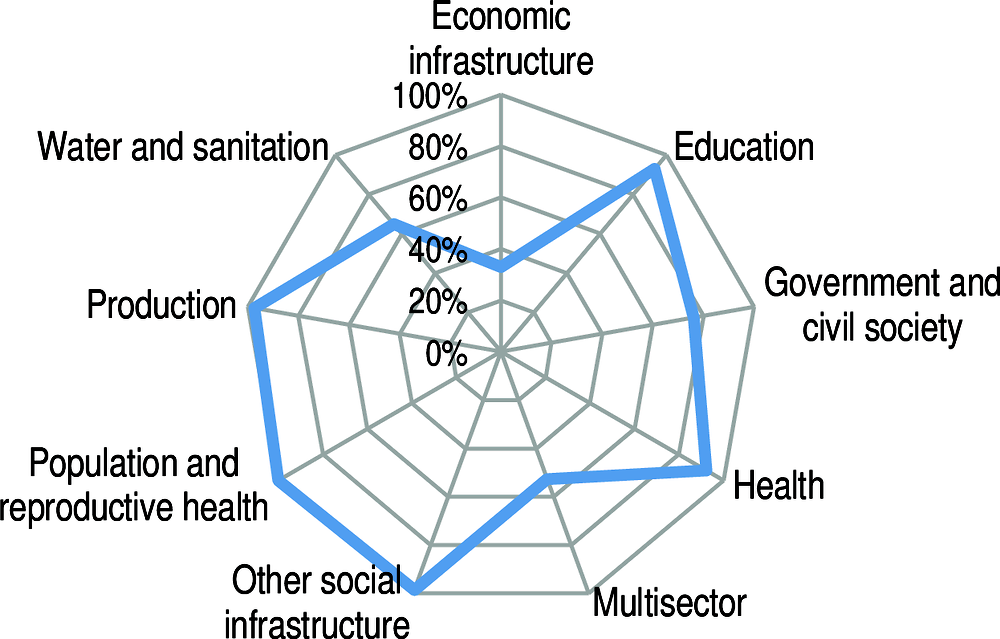Ireland
Leaving no one behind: Ireland’s approach and priorities
Ireland’s foreign policy and development programme strive towards a sustainable and just world, where people are empowered to overcome poverty and hunger and to fully realise their rights and potential. Ireland’s forthcoming (2018) international development policy will respond to the Sustainable Development Goals and continue to focus on the needs of the poorest and most vulnerable people to ensure no one is left behind.
For Ireland, the protection of human rights and freedoms and tackling extreme poverty and hunger are the basis for equality and for achieving peace and sustainable development. Gender equality is central to this vision as well as social protection that targets poor communities, especially child and female-headed households. Ireland is focusing on interlinkages between support for sustainable livelihoods, social services and nutrition. Its approach to crises is underpinned by International Humanitarian Law, core humanitarian principles such as flexible and timely funding and non-discrimination, providing life-saving aid to the most vulnerable and hard-to-reach populations.
Ireland is strengthening its understanding of multidimensional poverty and vulnerability for better targeting and more integrated programming. It believes that good political economy analysis and shifting to adaptive programming are key to success. Ireland is also investing in gender disaggregated data and disability inclusive development.
Financial flows from Ireland to developing countries
Ireland’s performance against commitments for effective development co-operation
Ireland’s official development assistance
In 2017, Ireland provided USD 808 million in net ODA (preliminary data), which represented 0.30% of gross national income (GNI) and a 2.4% decrease in real terms from 2016 due mainly to a decrease in its contributions to multilateral organisations only partially offset by an increase in in-donor refugee costs. Ireland, like other EU member countries, made a new commitment to meeting the 0.7% ODA/GNI target by 2030 and the government has indicated that the new policy will include a roadmap towards this target. In 2016, in-donor refugee costs were USD 11 million and represented 1.4% of Ireland’s total net official development assistance (ODA), compared to 0.1% in 2016.
Its share of untied ODA (excluding administrative costs and in-donor refugee costs) was 100% in 2016, compared with the Development Assistance Committee (DAC) average of 81.2%. The grant element of total ODA was 100% in 2016.
In 2016, 53.2% of ODA was provided bilaterally. In 2016, Ireland allocated 46.8% of total ODA as core contributions to multilateral organisations. In addition, it channelled 27.4% of its bilateral ODA for specific projects implemented by multilateral organisations (multi-bi/non-core contributions).
In 2016, 33.4% of bilateral ODA was programmed with partner countries. Ireland’s share of country programmable aid was lower than the DAC country average (46.8%) in 2016; 48% of this aid consisted of project-type interventions. Core aid to non-governmental organisations and humanitarian assistance accounted for half of bilateral ODA.
In 2016, USD 182.1 million of bilateral ODA was channelled to and through civil society organisations (CSOs). This equalled 42.6% of bilateral ODA. Between 2015 and 2016, the share of bilateral aid channelled through and to CSOs remained stable (it was 43% in 2015).
Bilateral ODA was primarily focused on sub-Saharan Africa. In 2016, Ireland allocated USD 250.5 million to sub-Saharan Africa and USD 29.6 million to the Middle East.
In 2016, 47.3% of bilateral ODA went to Ireland’s top 10 recipients. All eight of its key partners are among its top 10 recipients. Irish support to fragile contexts was USD 279.8 million in 2016 (66% of gross bilateral ODA). Support to fragile contexts consisted mainly of contributions to pooled funds (58%) and project-type interventions (36%).
In 2016, 55.9 % of bilateral ODA was allocated to least developed countries (LDCs), amounting to USD 238.8 million. The share allocated to the LDCs decreased compared to 2015 (when it was 60.1%). Ireland ranked highest among DAC members for the share of bilateral ODA allocated to the LDCs in 2016 (the DAC average was 21.9%).
At 0.14% of GNI in 2016, total ODA to the LDCs was below the UN target of 0.15% of GNI.
In 2016, 46.5% of bilateral ODA, or USD 198.6 million, was allocated to social infrastructure and services, with a strong focus on government and civil society (USD 62.4 million) and support to health (USD 58.6 million) and education (USD 33.9 million). Humanitarian aid amounted to USD 112 million. In 2016, Ireland committed USD 39.3 million (10% of bilateral allocable aid) to promote aid for trade and to improve developing countries’ trade performance and integration into the world economy.
USD 312.9 million of bilateral ODA supported gender equality. In 2016, 84% of Ireland’s bilateral allocable aid had gender equality and women’s empowerment as a principal or significant objective (up from 79% in 2015), compared with the DAC country average of 36.5%. Ireland’s aid to population and reproductive health, other social infrastructure, production, education, and health focuses on gender.
USD 88.5 million of bilateral ODA supported the environment in 2016. In 2016, 22.6% of its bilateral allocable aid supported the environment, compared with the DAC country average of 33%. Also, 22.4% (USD 87.6 million) of Irish bilateral allocable aid focused on climate change, compared with the DAC country average of 25.7%.
Note to reader: Annex B provides “Methodological notes on the profiles of Development Assistance Committee members”.

